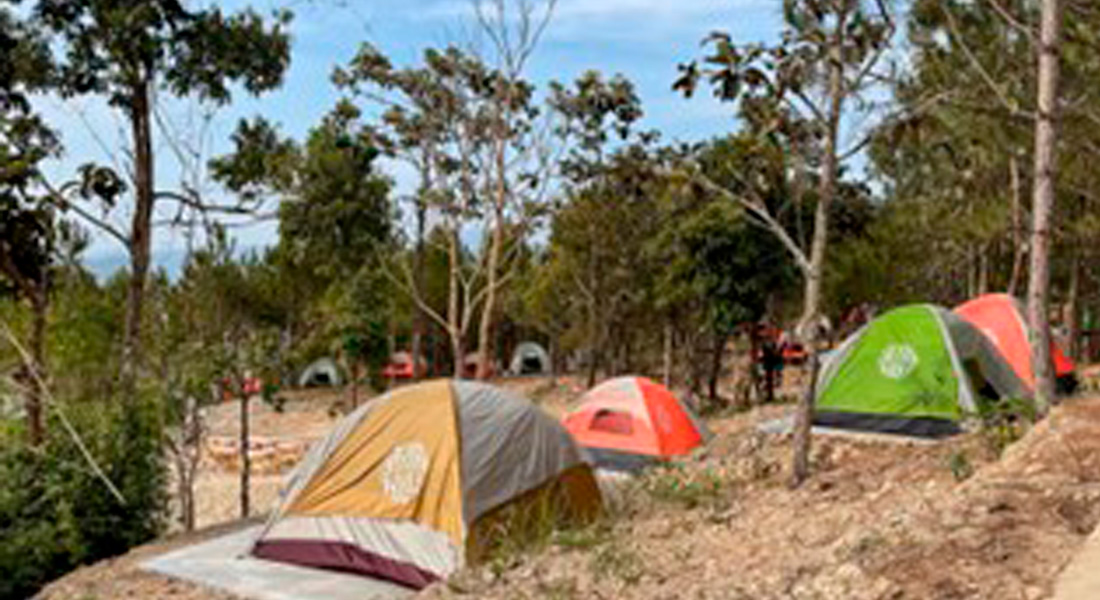Buddhist Resorts and Guinness Records in Vietnam’s Central Highlands
By Stephen Christopher (Marie Curie Postdoctoral Fellow, CCBS) & An Ngoc Hoang (Lead researcher, It’s T Time)
For years, the Buddhist resort called Samten Hills was built in relative obscurity, outside of media attention. A mountaintop in Lam Dong Province was cleared, official permissions were granted, South Asian artisans were invited to reproduce Tibetan monastic architecture, and Drikung Kagyu monks from Lamayuru Monastery in Ladakh were granted residency. It was only a few months before the inauguration in February and March 2023 that Samten Hills first released promotional videos and opened a website to register for the inauguration events or stay in the luxury villas or tents scattered around the premises.
For two weeks, Da Lat became the central hub for Vajrayana in Vietnam. Thousands of followers came from all over the country, representing every lineage, no lineage, or syncretic new religions. Thousands more came who were spiritual tourists in stylish dharma attire, curious about Vajrayana and enticed by their favourite Vajrayana KOL (key opinion leader), Tinna Tinh, who became an official booster of Samten Hills. And thousands more were weekend tourists, curiosity seekers snapping Instagram pics, there for a free lunch, often following Mahayana and seeing Vajrayana for the first time, mostly bussed in from Da Lat city.
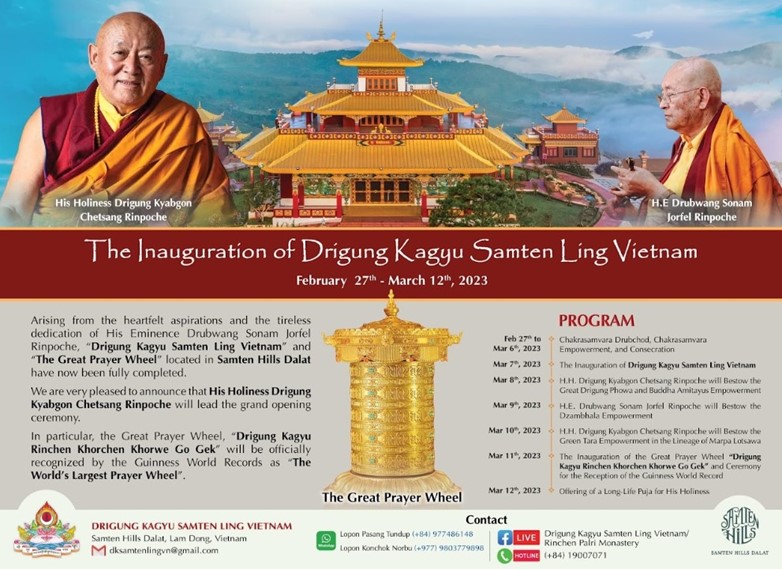
We flew from Ho Chi Minh City with two representatives of the Sakya Vietnam group. Their aim was to participate in spiritual empowerment to deepen their practice and, importantly, to raise awareness among Vietnamese Vajrayana followers about Sakya as they strive towards greater institutional stability and recognition. In total, eight Sakya members came to Samten Hills, and we graciously had the opportunity to join them in a private audience with Drikung Kyabgon Chetsang Rinpoche – the 37th head of Drikung Kagyu. Because there were dozens of small Vajrayana groups seeking an audience with Rinpoche, the process was streamlined: greet with bows, give donation envelopes, receive blessings, kneel for photos, and depart.
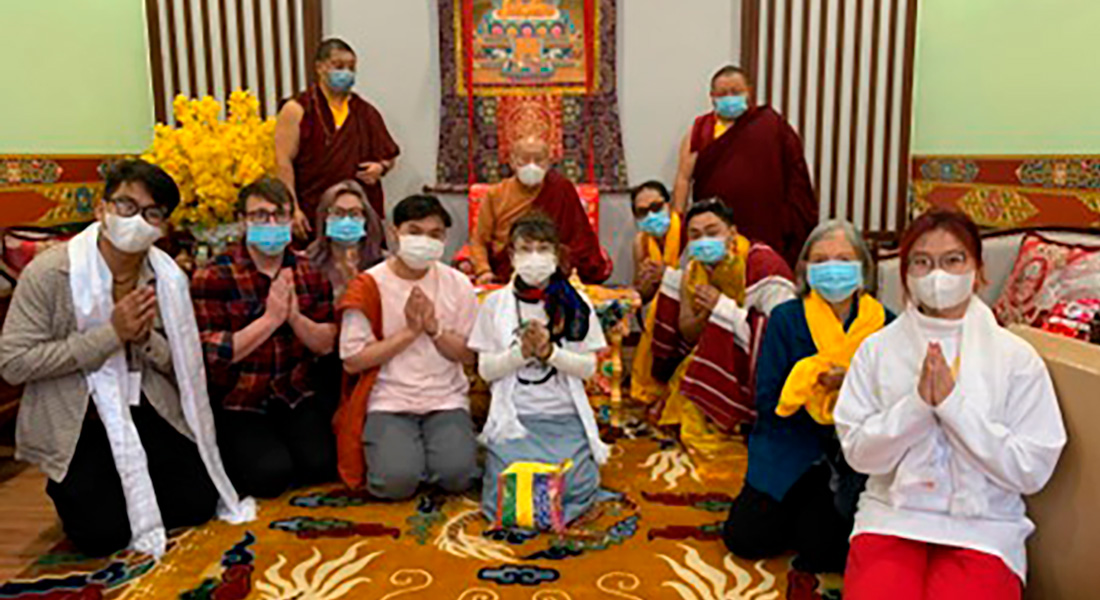
During two weeks of fieldwork, we interviewed over 60 people about their interest in Vajrayana and their experience of Samten Hills. In a forthcoming article, we explore the site as a fascinating case study of complex negotiations between Tibetans from India, transnational rinpoches, local Vietnamese practitioners, and government administration (from Lam Dong Province to the state-run Vietnam Buddhist Sangha, or Giao hoi Phat giao Viet Nam). It is simultaneously a power spot in the spiritual landscape of Da Lat, a heritage museum, a UNSECO “spiritual and cultural space for Vajrayana Buddhism in Vietnam”, a Guinness World Record holder, a functioning Drikung Kagyu temple (called Samten Ling) and a resort that promises cloud hunting, close engagement with unspoiled nature and a quiet space to relax and renew. The polysemy of meanings about what Samten Hills is and how it operates became evident through interviewing visitors and speaking with the leadership and marketing team.
During the inauguration, the gold-plated prayer wheel was awarded a Guinness World Record for the largest in the world, supplanting the one in Gansu Province. The Vietnam Federation of UNESCO Associations awarded Samten Hills as an important spiritual and cultural heritage site, raising questions about how Vajrayana fits into the historical development of Buddhism in Vietnam.
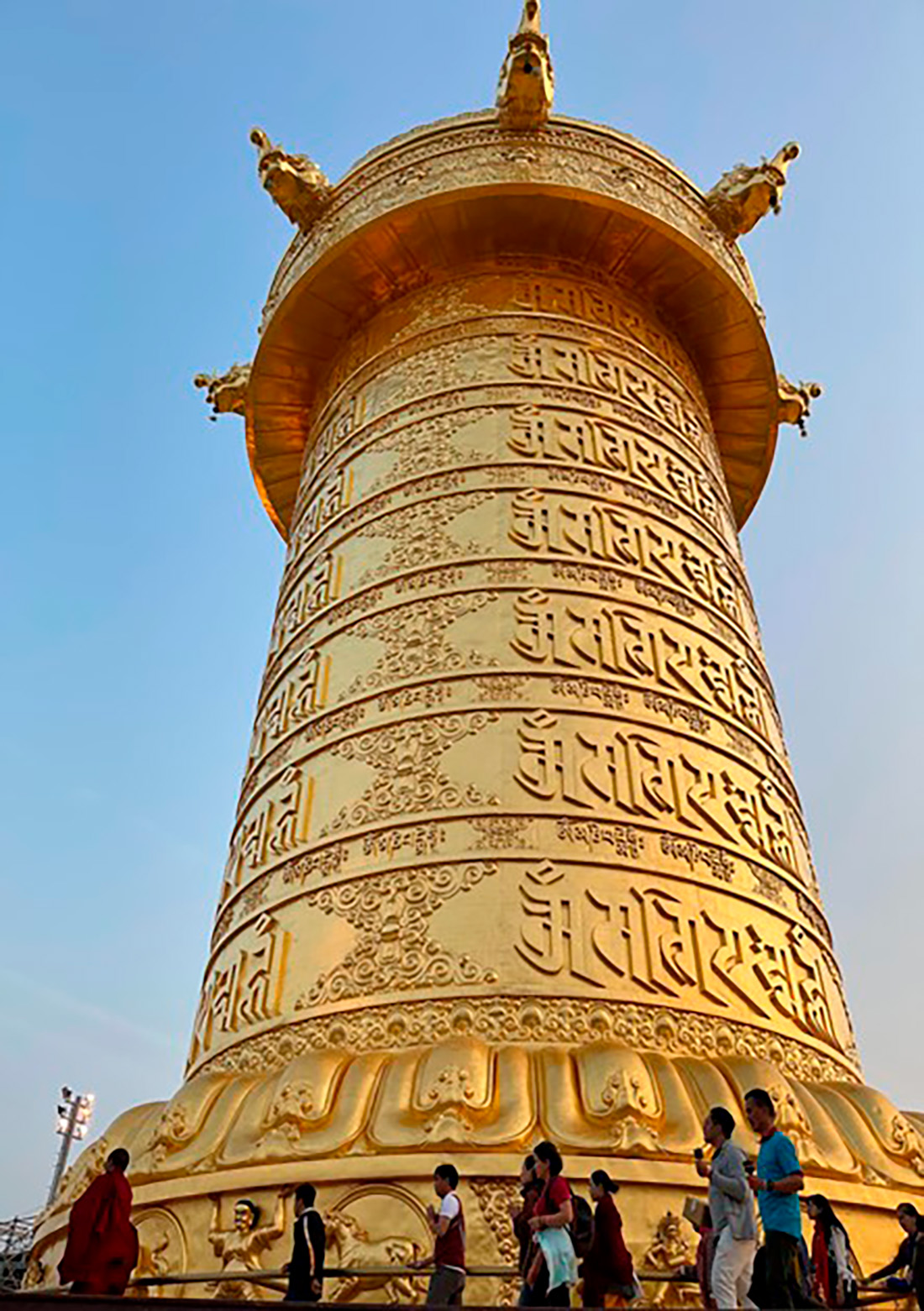
There are many high-production travel and promotional videos showing Samten Hills. Below is a walking tour of the resort based on our field notes, which highlights some aspects that may not be visible in videos. First, at the main gate of the resort is Pháp khí Kim cương Hỷ lạc – a pop-up shop selling Vajrayana statues and accessories. This is notable because the souvenir shop inside Samten Hills offered more branded merchandise and Korean wellness products than Vajrayana items. The shop’s main branch in Ho Chi Minh City is one of the most high-end Vajrayana stores in Vietnam. The store manager told us that the wealthy deity Zambala was the number one bestselling statue, especially on the day of the Zambala empowerment when many people brought their statues into the temple for blessing.
The main gate is a modernist red lattice iron resembling a Shinto torii that advertises ‘Samten Hills Dalat’. After entering, up a slope is the reception area, and adjacent to it is ample parking for the many tour buses. The reception area looks like a standard hotel reception with a moon-shaped chandelier, a doorman taking luggage, a marble check-in desk, and soothing Buddhist spa music. There are red ropes that cordon off areas for sorting regular guests from VIPs, lamas, and lineage followers. All the employees wear matching yellow-and-blue vests with the logo and motto of Samten Hills. The motto is always in English: Relax. Reflect. Renew. During the inauguration, the reception center sorts out who is staying inside the resort, who are VIPs and who are tourists. Sorting is facilitated by giving different colored rubber wristband bracelets with a Tibetan mantra printed on it. Tourists pre-register and enter with only a QR code and no bracelet. People staying in tents get orange bracelets. Lineage monks and nuns and VIPs get red bracelets, which give them access to the VIP cafeteria. Those guests who were invited by Samten Hills receive a formal ID badge that they wear around their necks and grants them access inside the temple.
After checking in, one scans their QR code at a turnstile and enters a loading area where Samten Hills-branded mini-buses or golf carts escort you up the mountain and into the temple complex. At the first intersection, a turn to the left reaches the modernist cafe called The Leaf, which (according to social media marketing) resembles foliage and “owns a unique architecture, delicate curves with 4 glassed surfaces, opening up a generous 360-degree view. On the way to worship the sacred place and return to yourself, stop at The Leaf Coffee, enjoy a cup of delicious coffee and admire the peaceful and vast natural scenery.” A promotional board outside the cafe advertises a “Grand Opening: Buy two coffees, get one free”. Inside, upper management and tourists are often hanging out with Tibetan monks, who stay in a proximate residence. At the nearby Namsay Villa complex, a central courtyard houses a huge, temporary Tibetan tent where performers practice before the main night of cultural events.
At the same intersection, a turn to the right reaches the main temple, called Samten Ling. The branding of the temple differentiates between Ling (often described generically as a cultural center or even heritage museum) and Hills (as resort with luxury amenities and accommodation). Driving up, one passes under a main Tibetan gate and enters the cement driving kora that circles the temple (and takes about 12 minutes to circumambulate on foot). On the right is the resplendent golden prayer wheel and a massive Amitayus Buddha statue; a bit further is a golden walking bridge, supported by golden hands in the style made internationally recognizable at Ba Na Hills resort area in Da Nang. At the end of the bridge is a golden Maitreya Buddha statue.
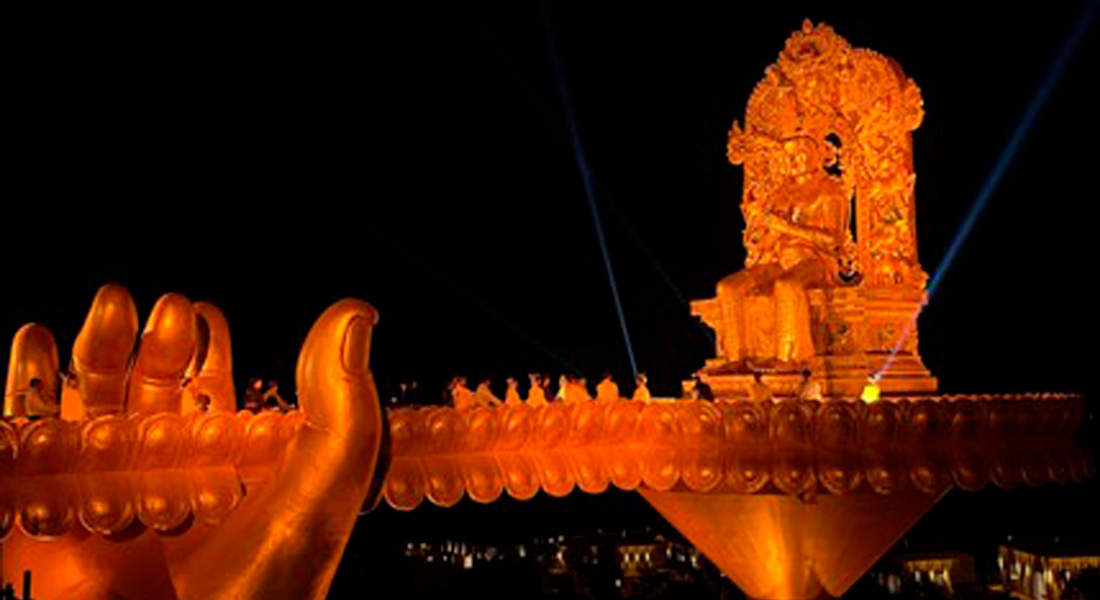
After being dropped off at the main temple, one removes their shoes and places them in plastic bags, which are collected upon leaving. The temple area itself is closed off to anyone except VIPs and guest IDs, so most visitors can only view the outside of the temple from a cordoned-off distance. For a virtual tour of the temple and its premise, see this promotional video. Even from a distance, however, the overall artistic effect, attention to iconographic detail and architectural design mark Samten Ling as the most opulent Tibetan temple in Vietnam. While other locations have powerful Tibetan prayer wheels and stupas, constructed at the behest of visiting Tibetan monks and generating powerful spiritual energy in Vietnam, they cannot compare with the sheer scale and exquisiteness of Samten Ling.
From the temple gate, there are three paths: one path goes downhill towards the restaurants, luxury villas and monastery residents; one path goes uphill towards a massive hanger, where a jumbo screen broadcasts the live feed of daily empowerments and where tourists go for free lunch distribution (or to buy snacks from the food carts of local Da Lat restaurants); the last path goes past organizational tents and culminates at a dead-end overlooking the undeveloped mountainside, the planned site of a future Buddhist university.

Scattered throughout the temple complex are areas for tents, clustered on individual cement platforms, with electrical units inside the tents and romantic fairy lights suspended outside. Each tent and sleeping bag are branded with the Samten Hills logo, as are the ubiquitously distributed water bottles. Even though we all paid a not-insignificant amount of money to stay in the tents, the Samten Hills leadership promised to refund everyone in full to show gratitude for coming to the inauguration. The website advertised camping in Samten Hills as a chance to “connect closely with unspoiled nature”. For many, it was their first time ever sleeping in a camp; and sleeping adjacent to the temple, which from 5AM emitted the sounds of Vajrayana chanting, added to the novelty. Now the inauguration has come and gone, and a new set of questions arise about the meteoric growth of Vajrayana Buddhism in Vietnam and the future trajectory it will take.
